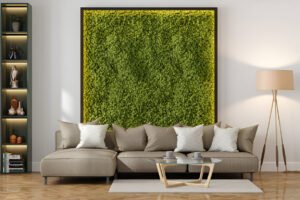In the artistic world of interior design, the concept of aesthetics goes beyond just creating visually appealing spaces. It delves into the fascinating world of the psychology of Design, where the arrangement, colours, textures, and elements within a space can significantly influence our emotions and overall well-being.
This article explores the intricate relationship between interior design and human psychology, highlighting how the arrangement of spaces can shape our feelings and enhance our quality of life.
1. The Art of Designing Emotions:
Interior design is more than just arranging furniture; it’s an art that executes the emotions people experience within a given space. From the warm and cozy feeling of a rustic cottage to the sleek and modern ambiance of a minimalist apartment, each design choice can evoke distinct emotional responses. Understanding the psychology behind these choices enables designers to create spaces that align with the desired emotional experience.
2. Psychology of Colours and Mood Enhancement:
Colours are powerful psychological triggers that can significantly impact our emotions. Bright, vibrant colours like yellows and oranges can evoke feelings of warmth, energy, and happiness. On the other hand, cool tones such as blues and greens can induce a sense of calmness and relaxation. By strategically incorporating these colors, interior designers can set the tone for a space, enhancing its intended purpose and influencing the emotions of its occupants.
3. Textures and emotions:
The textures present within a space also play a vital role in shaping emotions. Soft textures like plush carpets and velvety cushions can create a sense of comfort and security, while smooth surfaces like glass and metal can evoke a more modern and sophisticated atmosphere. The tactile experience of different textures can stimulate our senses, contributing to an overall feeling of satisfaction and well-being.
4. Elements of Connection:
Interior design is an opportunity to infuse spaces with elements that hold personal meaning. Photographs, artwork, and sentimental objects can foster a sense of connection and nostalgia. These elements not only add character to a room but also evoke positive emotions by sparking memories and feelings of attachment.
5. Spacely Arrangement and Functionality:
The layout and arrangement of furniture and decor can significantly impact the functionality and emotional experience of a space. An open layout can promote social interaction and a sense of togetherness, while secluded nooks can offer a place of solitude and introspection. Thoughtfully designed spaces that consider the flow of movement and the purpose of each area can contribute to a harmonious and emotionally fulfilling environment.
6. Designing for Well-Being:
Designing your space is more than just aesthetics; it’s a tool for enhancing well-being. The right design choices can create spaces that support mental and emotional health. For instance, incorporating ample natural light can uplift mood and boost productivity. Integrating natural elements, such as indoor plants, can improve air quality and create a sense of tranquility.
In Conclusion:
The psychology of space reveals that interior design is a multidimensional endeavor that goes beyond creating visually pleasing environments. By understanding how colors, textures, spatial arrangements, and personal elements impact human emotions, interior designing have the power to craft spaces that promote positive feelings and well-being. Whether it’s a home, workplace, or public space, the careful arrangement of these design elements can transform spaces into havens of comfort, joy, and inspiration.





